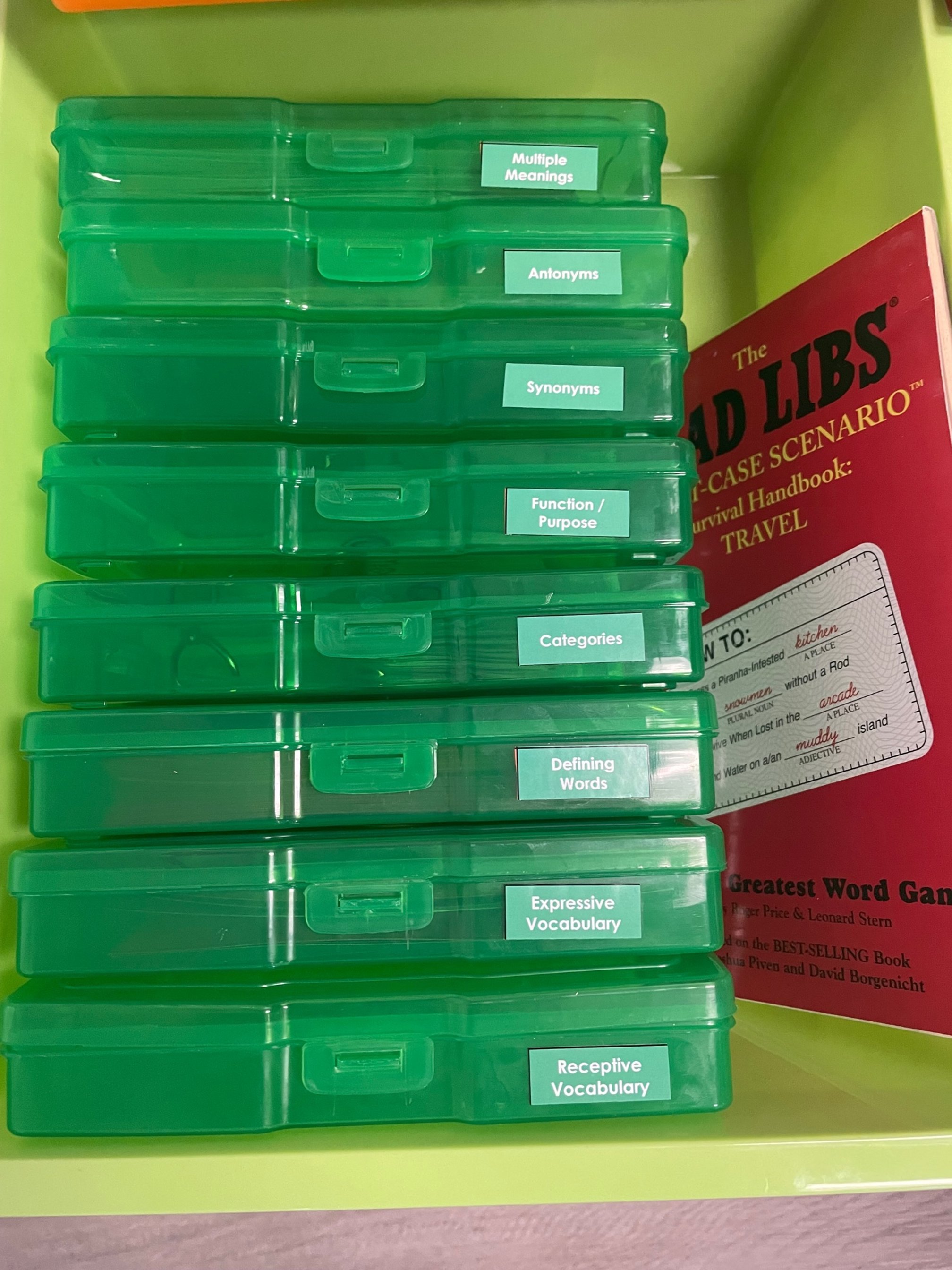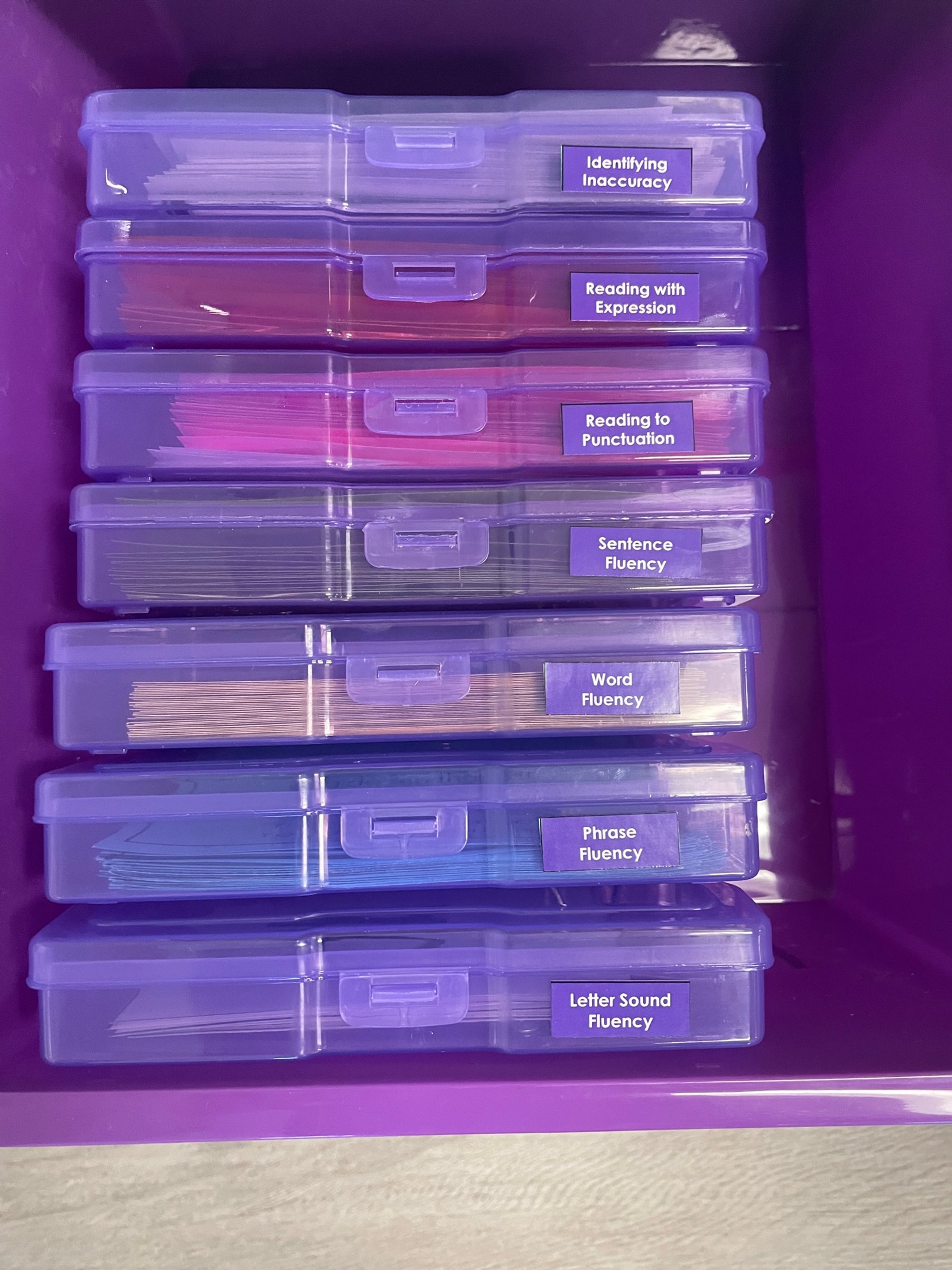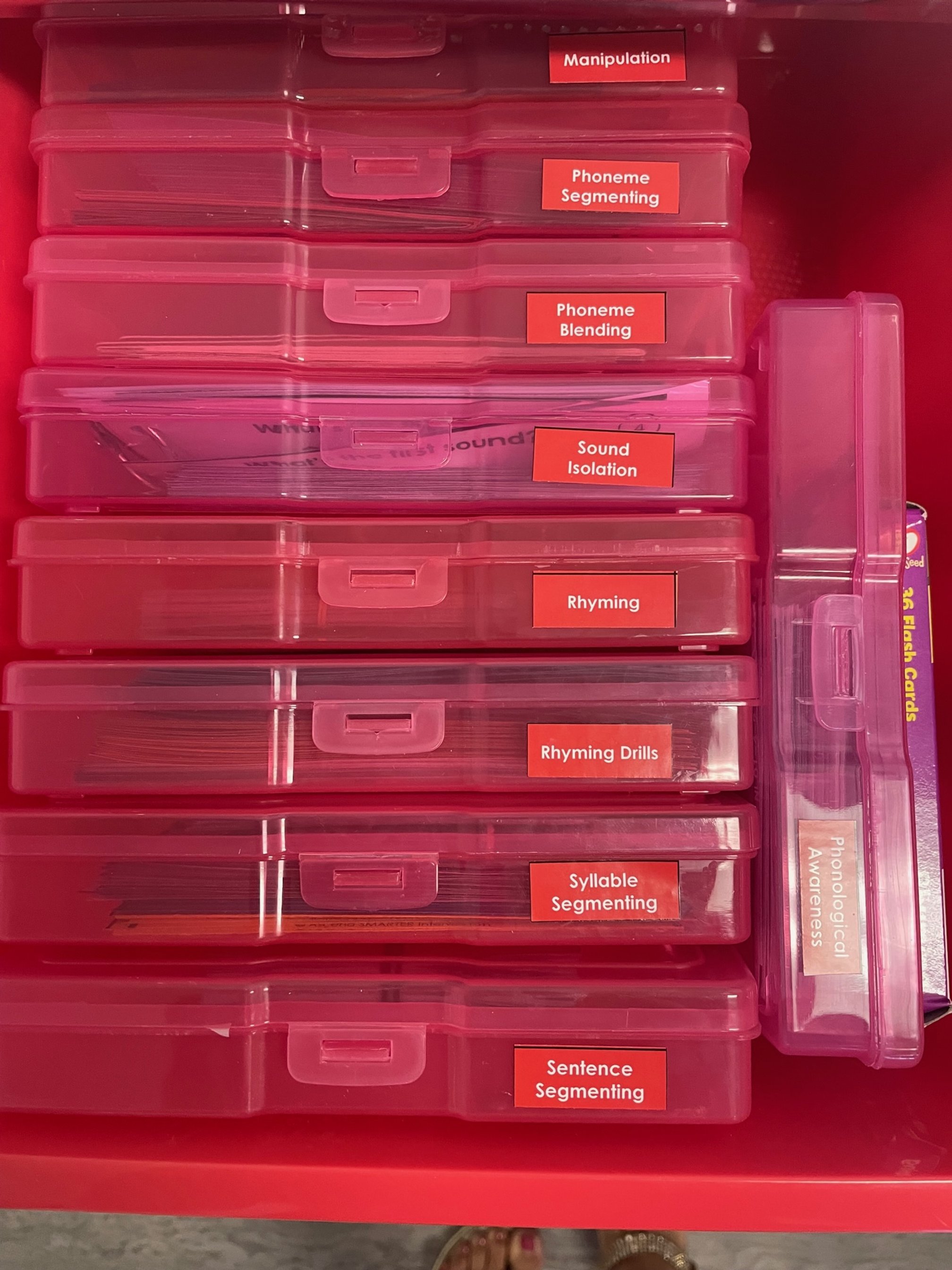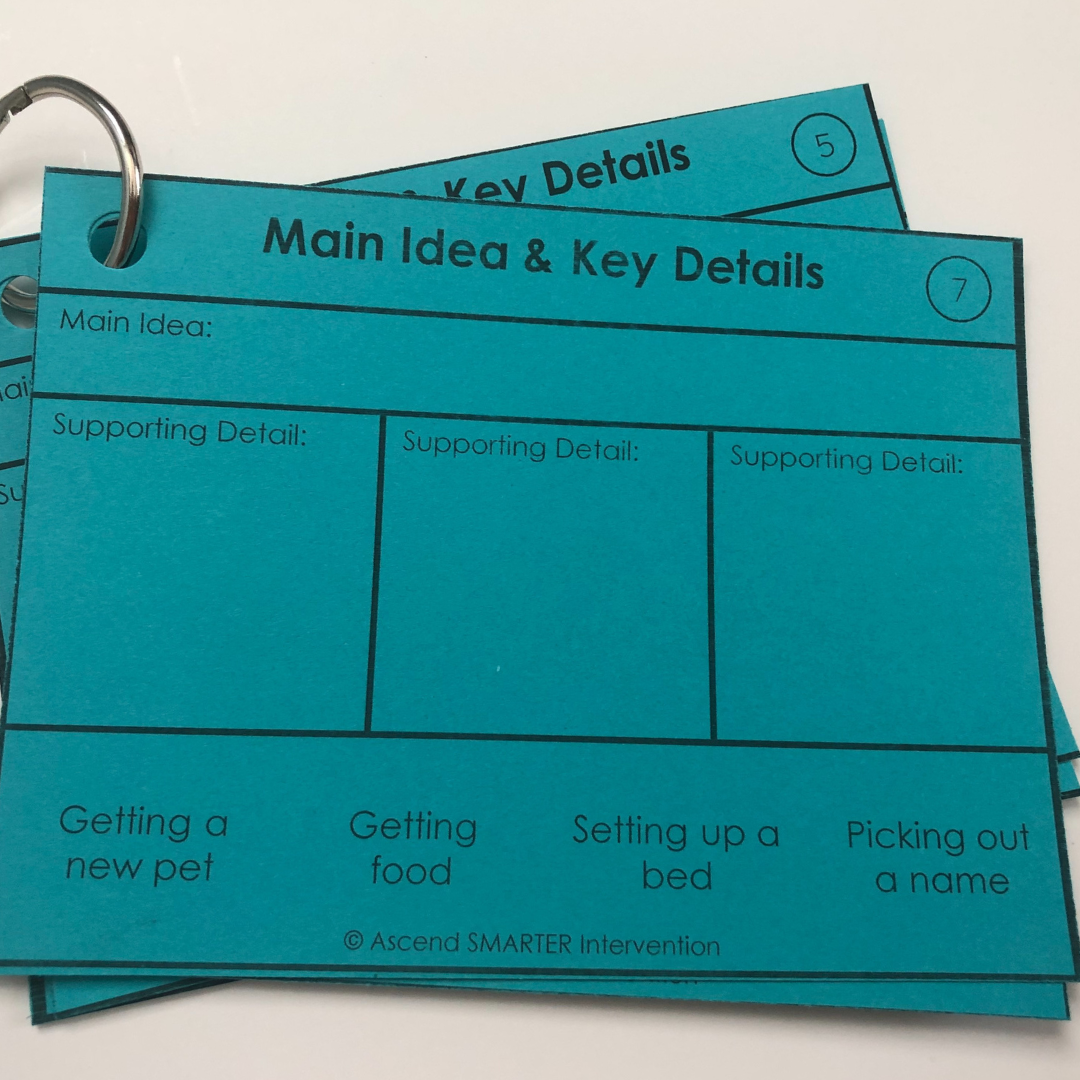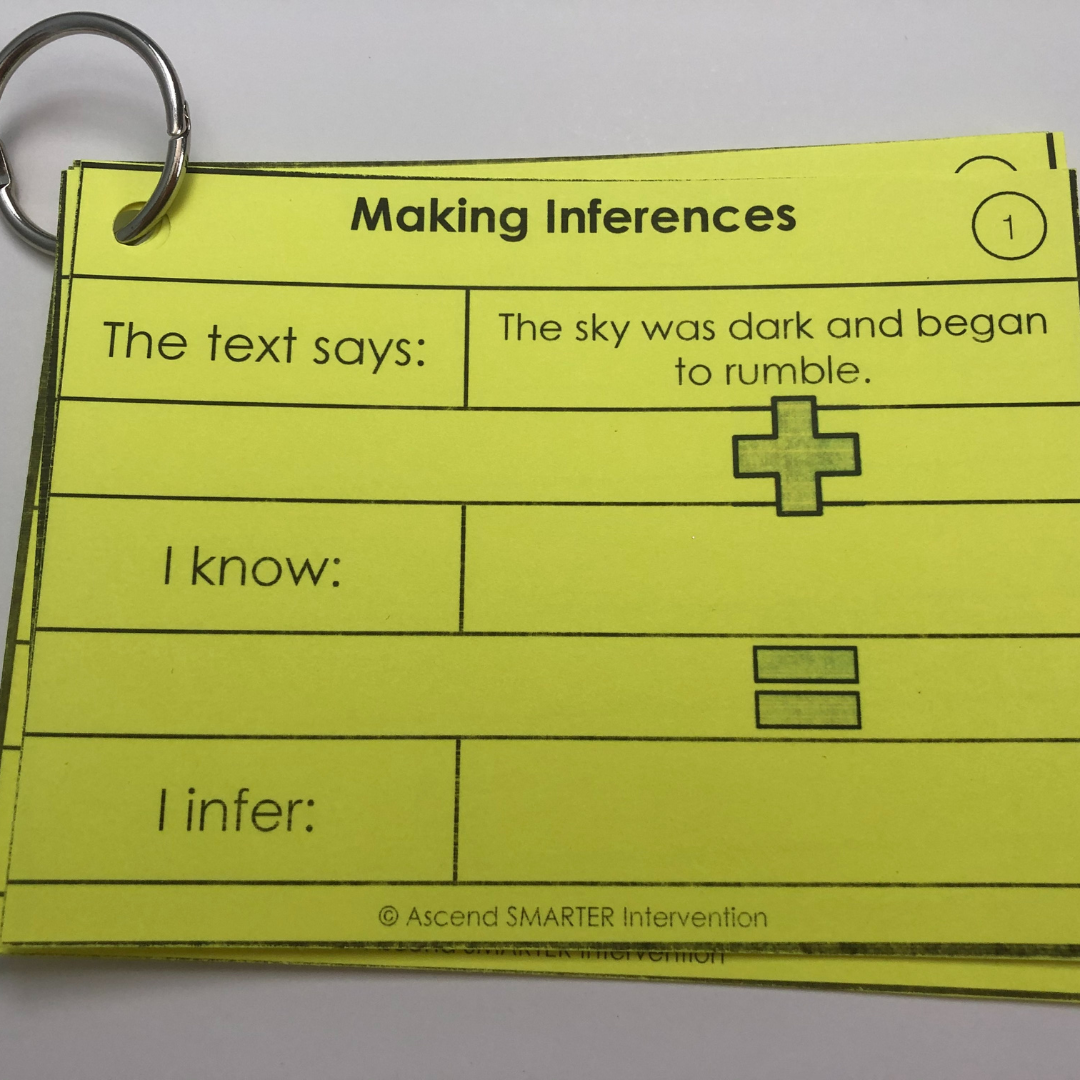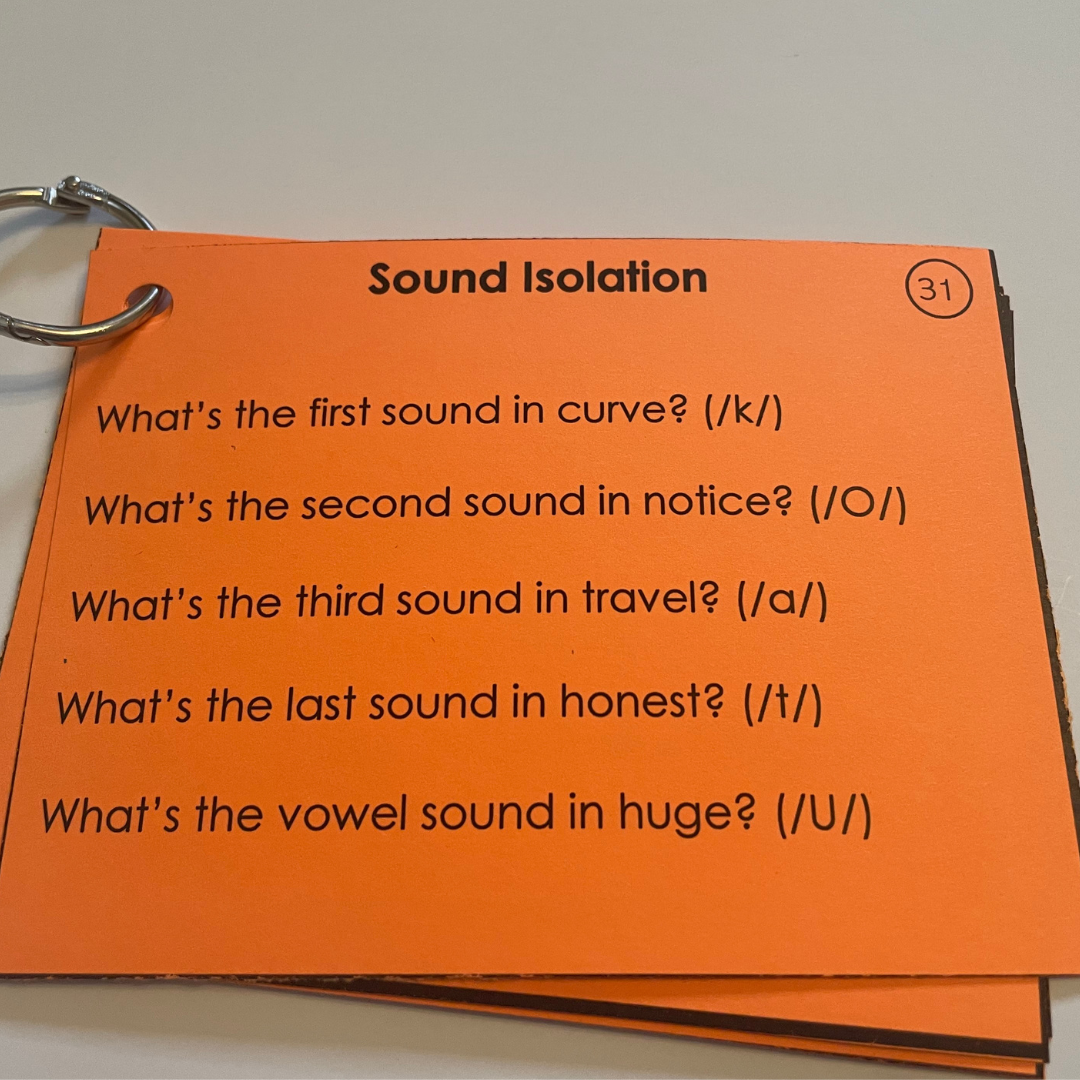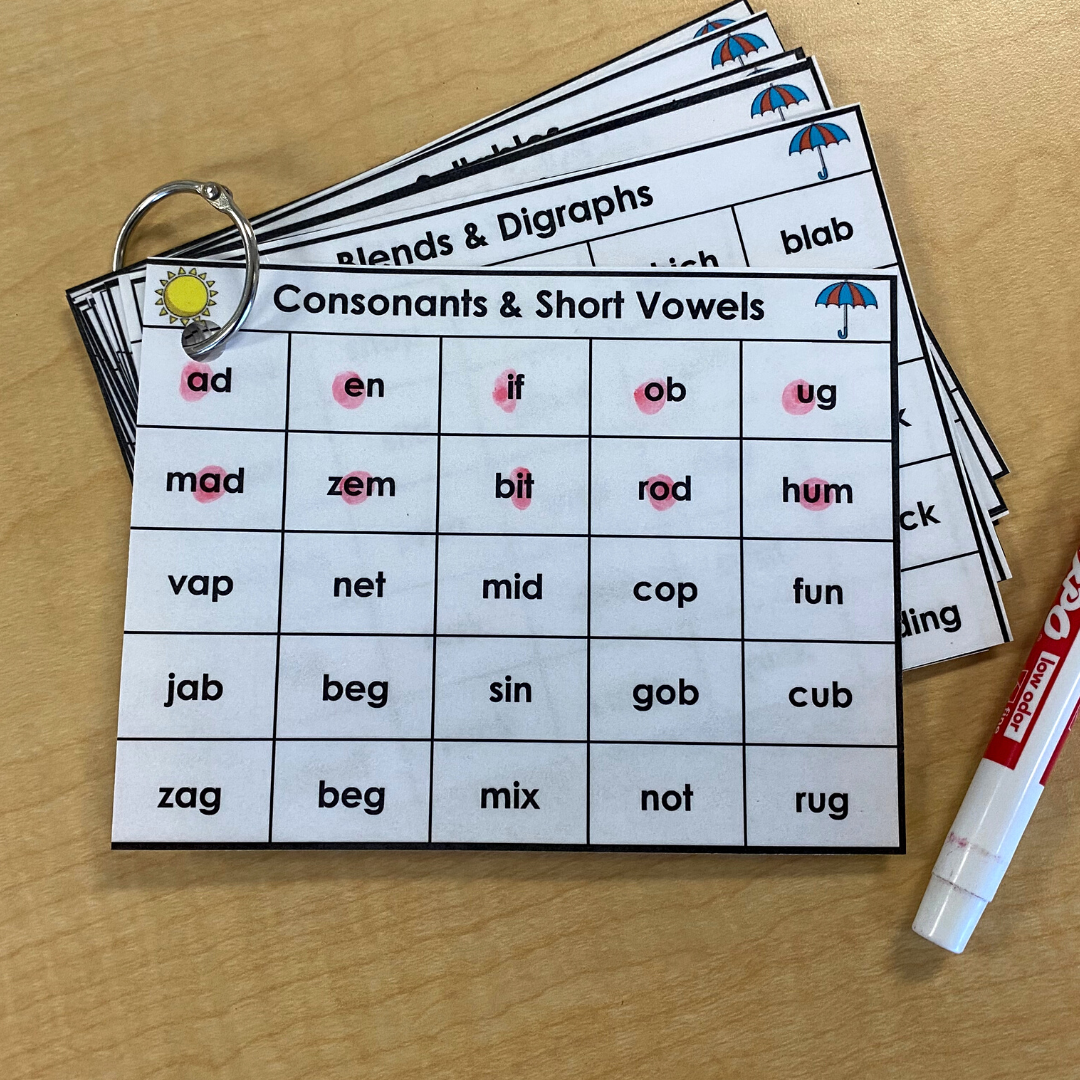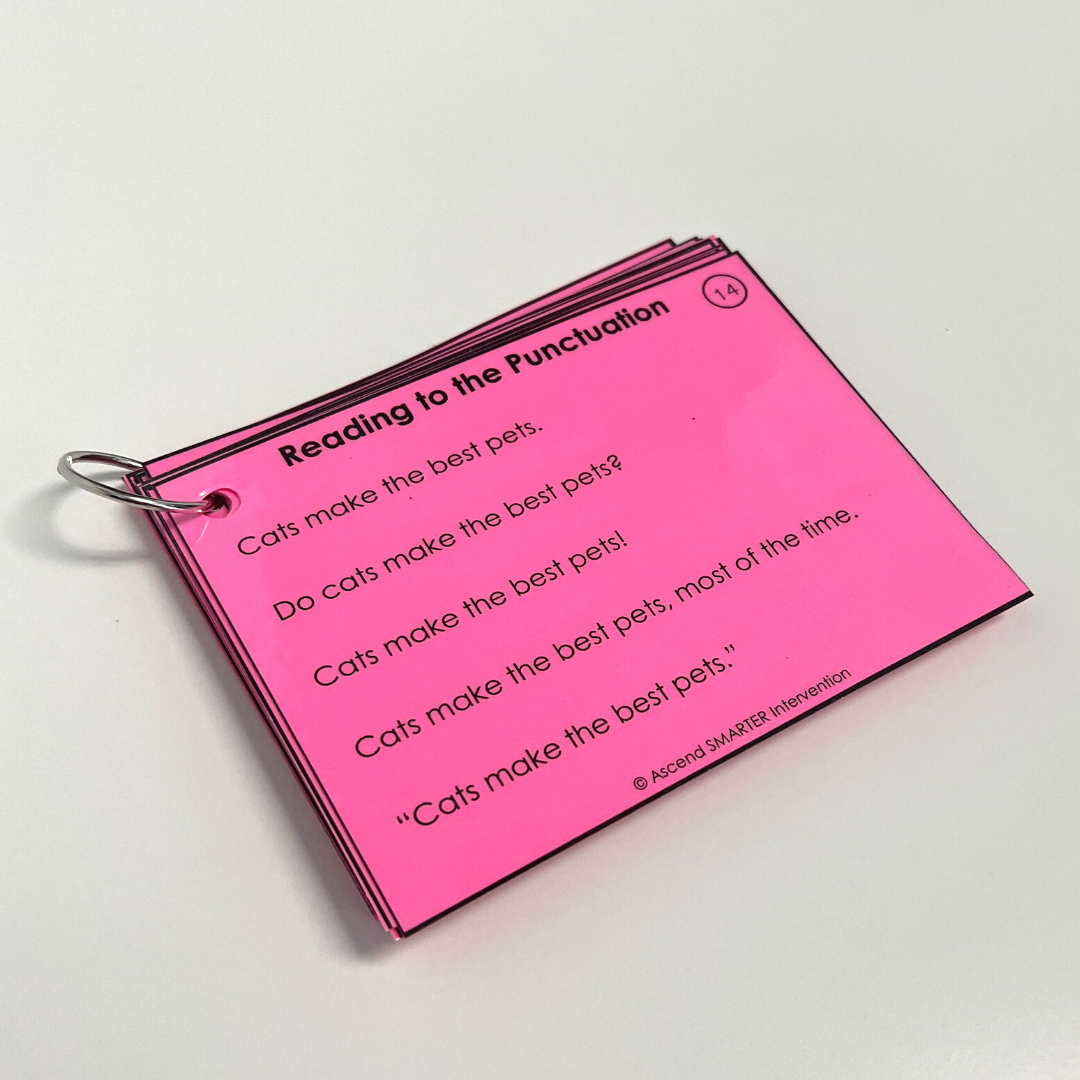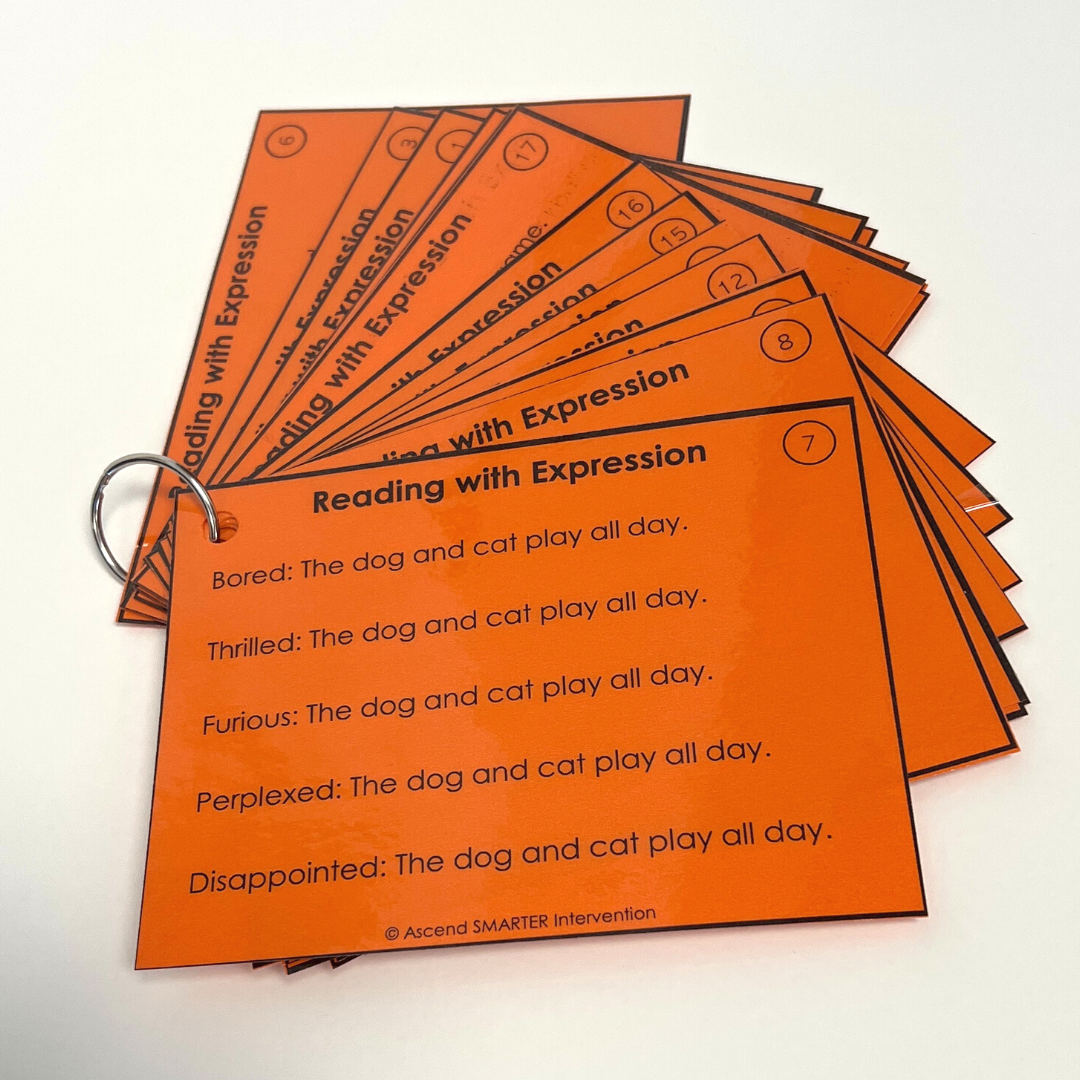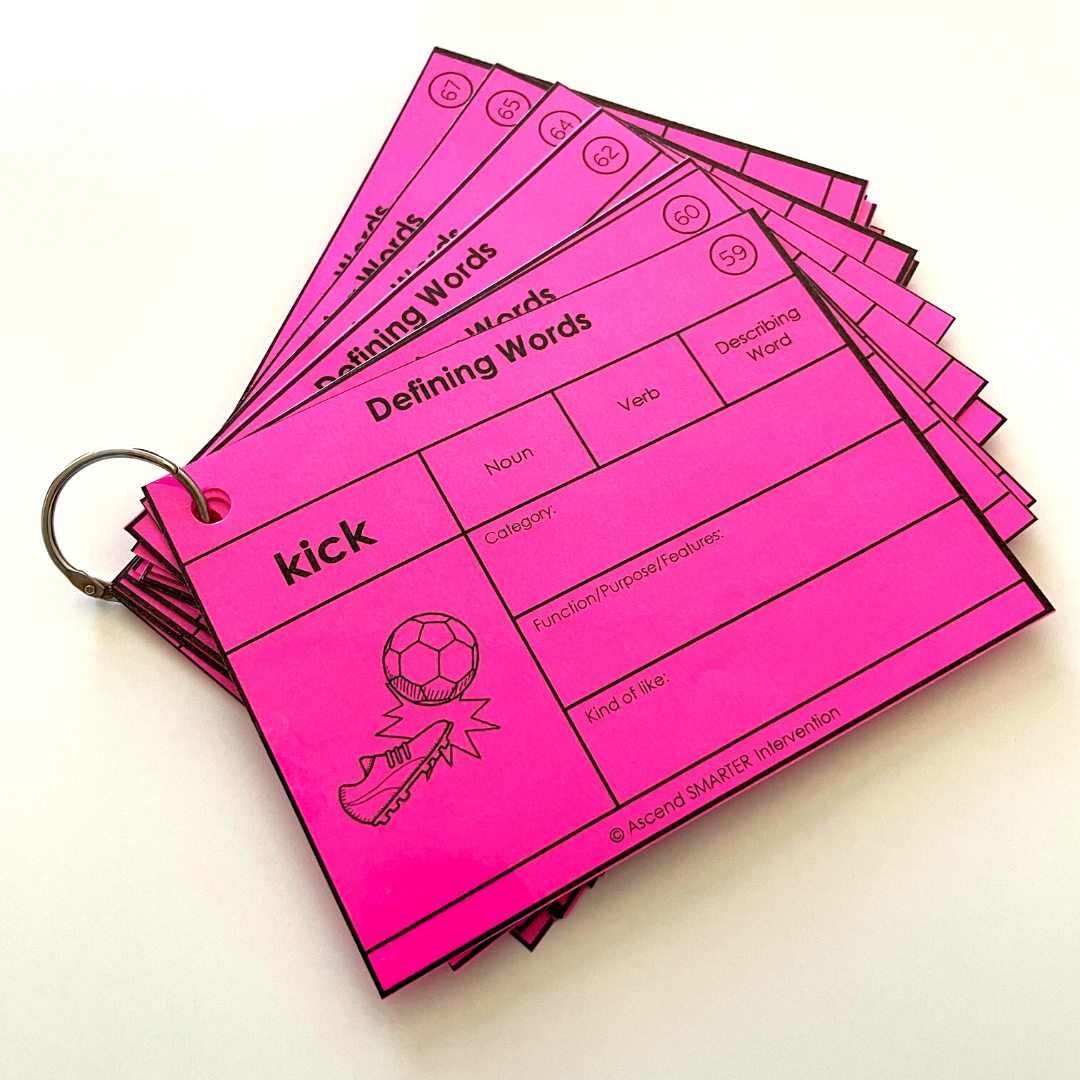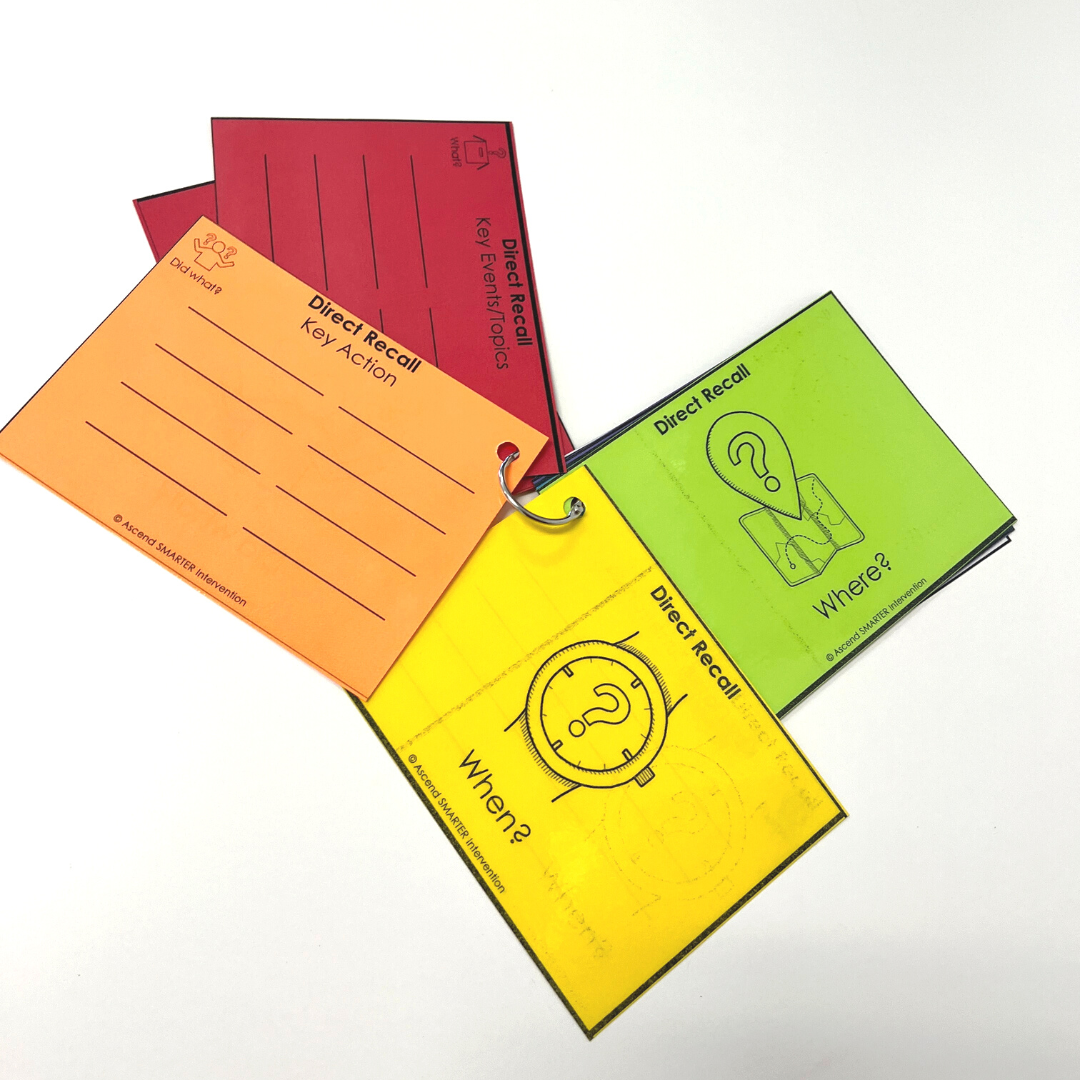How to Organize Your Literacy Task Cards
Have you ever found yourself rifling through a drawer full of task cards, looking for the set that you need, only to pull out torn pages and crumpled, incomplete sets? Or maybe you’ve been in the middle of a lesson, sifting through your bag to find the review game you need, only to realize that the rubber band snapped and now there are cards everywhere?
Sound familiar?
When it comes to literacy instruction, there is no shortage of games, activities, and other resources. If we want to actually be able to use all of the materials we’ve made, purchased, and collected over the years - we need to be able to find them.
Today, we’re walking through the system we use to keep all of our task cards, flashcards, and review games organized.
Step 1: Start by finding a system that works for you.
This could be bins, buckets, or drawers like we use.
We like >>>this rainbow cart<<< because it makes color-coding our resources easy.
Step 2: Determine What you are putting in each of the drawers
Each of our core components of literacy gets assigned one of the larger drawers. We use the red drawer to house our PA materials, orange for phonics, green for vocab, purple for fluency, and blue for comprehension.
Step 3: Set up a system to organize the contents of each drawer
Within each drawer, we use bins to organize our materials based on the specific skill they target.
For example, in our Phonological Awareness drawer, we’ll have bins for sentence segmenting, syllable segmenting, phoneme segmenting, rhyming, sound isolation, syllable blending, phoneme blending, and any other subskills we’ll target during our lessons. In our vocabulary bin, we’ll include boxes for receptive and expressive vocabulary, defining words, categorizing, identifying the function/purpose of a word, synonyms, antonyms, and more.
You can add bins for whatever subskills you are working on with your students.
Step 4: Fill the Bins With Your Materials
Inside each of these bins, we’ll put any task cards, flashcards, or other activities we have to support these skills. We use binders for full worksheets (more info on that coming soon!). Check out a few examples of the types of activities we put in these bins below!
Then, we use the shallow drawers of the cart to organize our phonics review games.
When we teach students new phonics concepts, we always teach them explicitly. Then, as we move on to new concepts, we circle back to review the previously taught skills. Games allow us to review skills in a way that keeps students engaged.
We split up our review games into games that target short vowels, digraphs & blends, each of the six syllable types, affixes & roots, and complex patterns. In each drawer, we’ll place review games that align with that concept or syllable type. This makes it incredibly easy to find resources that support our students’ needs during our lessons! Need additional segmenting practice? Head to the PA drawer and grab the segmenting bin. Need to practice finding the main idea? The main idea task cards are in the comprehension drawer. Looking to grab a quick R-controlled syllable review game? Check the R-controlled syllable drawer.
To recap -
We use each of the larger drawers to house task cards and other materials related to a different core component of literacy. We put these in bins organized by subskill to keep track of everything. Then, we use the shallow drawers to organize phonics review games.
If you’re looking for literacy activities to fill your rainbow cart…
All of the materials in our rainbow cart come from our 5-Core Components of Literacy Activity Library. The library gives you access to hundreds of resources you can use alongside any curriculum to further target key literacy skills including Phonological Awareness, Phonics, Vocabulary, Fluency, Comprehension, and Writing.
Get access to content-specific and high-interest units that will help students generalize their literacy knowledge across the content areas. PLUS, who doesn’t love getting new activities delivered to their inbox every month?!
AND even better - your first month in the library is 50% off. Click the button below to check it out!
This blog contains affiliate links. While there is no additional cost to you, we do get a small commission if you choose to purchase using our link. We promise we only share products that we use and love!



